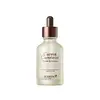What's inside
What's inside
 Key Ingredients
Key Ingredients

No key ingredients
 Benefits
Benefits

 Concerns
Concerns

No concerns
 Ingredients Side-by-side
Ingredients Side-by-side

Daucus Carota Sativa Root Extract
Skin ConditioningGlycerin
HumectantPropanediol
SolventMethylpropanediol
SolventDipropylene Glycol
HumectantWater
Skin ConditioningButylene Glycol
HumectantDiethoxyethyl Succinate
SolventPPG-13-Decyltetradeceth-24
Emulsifying1,2-Hexanediol
Skin ConditioningBetaine
HumectantEthylhexylglycerin
Skin ConditioningPanthenol
Skin ConditioningUndaria Pinnatifida Extract
Skin ConditioningSodium Carbomer
Emulsion StabilisingC10-30 Alkyl Acrylate
Allantoin
Skin ConditioningCarbomer
Emulsion StabilisingSodium Hyaluronate
HumectantGlyceryl Acrylate/Acrylic Acid Copolymer
HumectantDaucus Carota Sativa Seed Oil
EmollientSodium Phytate
Maltodextrin
AbsorbentBeta-Glucan
Skin ConditioningSaccharide Hydrolysate
HumectantCaprylyl Glycol
EmollientOlea Europaea Fruit Oil
MaskingButyrospermum Parkii Butter
Skin ConditioningOctyldodecanol
EmollientHydrogenated Lecithin
EmulsifyingLavandula Hybrida Oil
EmollientSalvia Officinalis Oil
MaskingArtemisia Vulgaris Oil
PerfumingCitrus Aurantium Dulcis Peel Oil
MaskingXanthan Gum
EmulsifyingGlyceryl Citrate/Lactate/Linoleate/Oleate
EmulsifyingHydroxyethyl Acrylate/Sodium Acryloyldimethyl Taurate Copolymer
Emulsion StabilisingGlyceryl Oleate
EmollientGlycolipids
Skin ConditioningGlycosphingolipids
EmollientTocopherol
AntioxidantCeramide NP
Skin ConditioningDaucus Carota Sativa Root Extract, Glycerin, Propanediol, Methylpropanediol, Dipropylene Glycol, Water, Butylene Glycol, Diethoxyethyl Succinate, PPG-13-Decyltetradeceth-24, 1,2-Hexanediol, Betaine, Ethylhexylglycerin, Panthenol, Undaria Pinnatifida Extract, Sodium Carbomer, C10-30 Alkyl Acrylate, Allantoin, Carbomer, Sodium Hyaluronate, Glyceryl Acrylate/Acrylic Acid Copolymer, Daucus Carota Sativa Seed Oil, Sodium Phytate, Maltodextrin, Beta-Glucan, Saccharide Hydrolysate, Caprylyl Glycol, Olea Europaea Fruit Oil, Butyrospermum Parkii Butter, Octyldodecanol, Hydrogenated Lecithin, Lavandula Hybrida Oil, Salvia Officinalis Oil, Artemisia Vulgaris Oil, Citrus Aurantium Dulcis Peel Oil, Xanthan Gum, Glyceryl Citrate/Lactate/Linoleate/Oleate, Hydroxyethyl Acrylate/Sodium Acryloyldimethyl Taurate Copolymer, Glyceryl Oleate, Glycolipids, Glycosphingolipids, Tocopherol, Ceramide NP
 Reviews
Reviews

Ingredients Explained
These ingredients are found in both products.
Ingredients higher up in an ingredient list are typically present in a larger amount.
1,2-Hexanediol is a synthetic liquid and another multi-functional powerhouse.
It is a:
- Humectant, drawing moisture into the skin
- Emollient, helping to soften skin
- Solvent, dispersing and stabilizing formulas
- Preservative booster, enhancing the antimicrobial activity of other preservatives
Butylene Glycol (or BG) is used within cosmetic products for a few different reasons:
Overall, Butylene Glycol is a safe and well-rounded ingredient that works well with other ingredients.
Though this ingredient works well with most skin types, some people with sensitive skin may experience a reaction such as allergic rashes, closed comedones, or itchiness.
Learn more about Butylene GlycolEthylhexylglycerin (we can't pronounce this either) is commonly used as a preservative and skin softener. It is derived from glyceryl.
You might see Ethylhexylglycerin often paired with other preservatives such as phenoxyethanol. Ethylhexylglycerin has been found to increase the effectiveness of these other preservatives.
Glycerin is already naturally found in your skin. It helps moisturize and protect your skin.
A study from 2016 found glycerin to be more effective as a humectant than AHAs and hyaluronic acid.
As a humectant, it helps the skin stay hydrated by pulling moisture to your skin. The low molecular weight of glycerin allows it to pull moisture into the deeper layers of your skin.
Hydrated skin improves your skin barrier; Your skin barrier helps protect against irritants and bacteria.
Glycerin has also been found to have antimicrobial and antiviral properties. Due to these properties, glycerin is often used in wound and burn treatments.
In cosmetics, glycerin is usually derived from plants such as soybean or palm. However, it can also be sourced from animals, such as tallow or animal fat.
This ingredient is organic, colorless, odorless, and non-toxic.
Glycerin is the name for this ingredient in American English. British English uses Glycerol/Glycerine.
Learn more about GlycerinWater. It's the most common cosmetic ingredient of all. You'll usually see it at the top of ingredient lists, meaning that it makes up the largest part of the product.
So why is it so popular? Water most often acts as a solvent - this means that it helps dissolve other ingredients into the formulation.
You'll also recognize water as that liquid we all need to stay alive. If you see this, drink a glass of water. Stay hydrated!
Learn more about Water